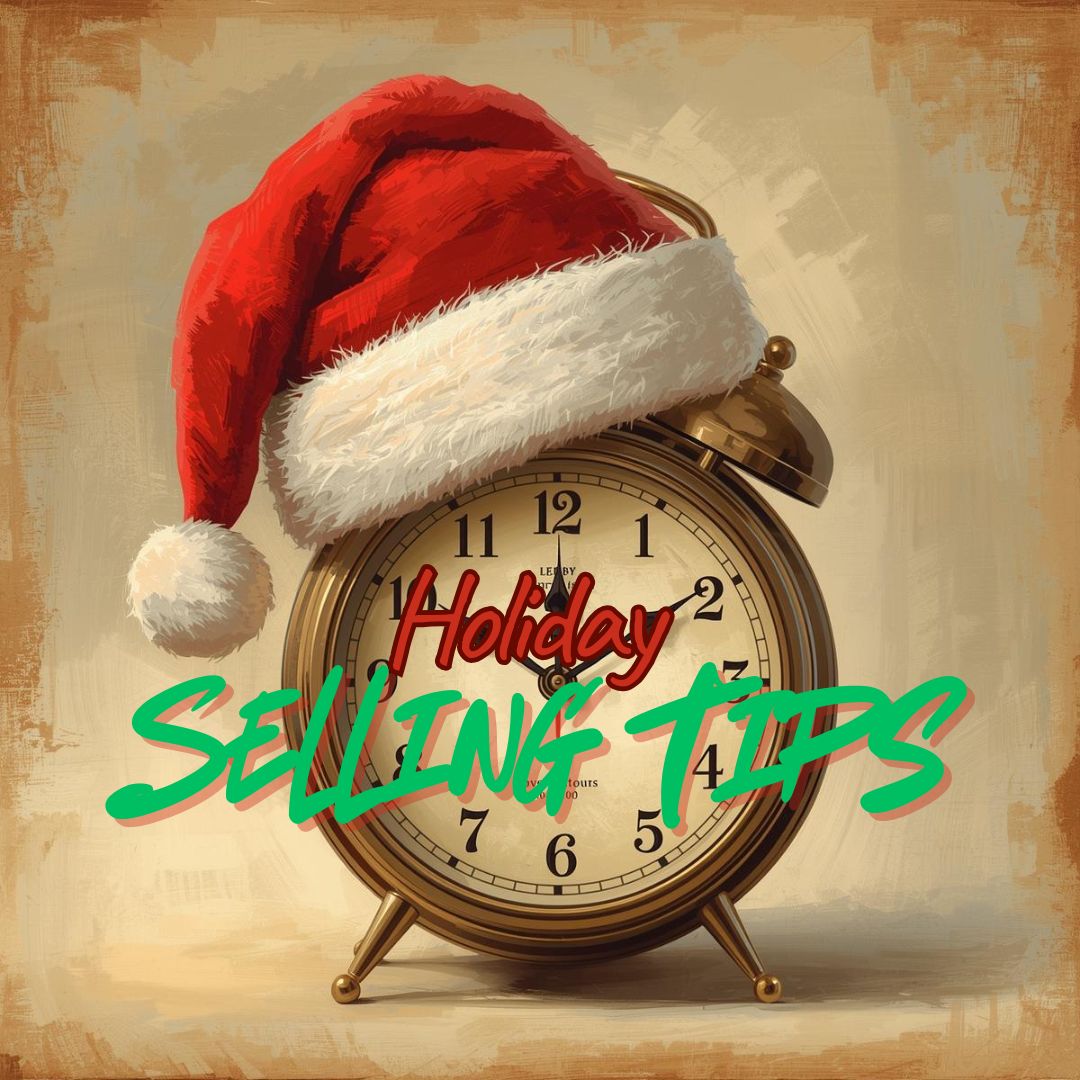Ever feel like closing a deal in the publishing industry is akin to Frodo’s epic quest to destroy the One Ring? The journey is long, filled with unexpected turns, and requires an incredible amount of perseverance. Welcome to the lord of long sales cycles in B2B publishing, where a single sale can often stretch from weeks to months.
Navigating an industry as layered as publishing, the sales process is rarely a quick sprint. Instead, it's more of a marathon requiring patience, strategy, and a delicate balancing act between staying on your prospect's radar and avoiding being overly present like when Frodo wears the ring.
In this publishing industry resource, we’ll explore effective strategies for maintaining persistence without crossing the line into pushiness. Leveraging these relationship-building techniques, utilizing advanced technology, and employing personalized outreach, you can grasp the finesse of long sales cycle and guide your publishing prospects to a successful close, one step at a time.
Let's explore the unique challenges of long sales cycles, share actionable tips for crafting value-added follow-ups, and show you how to leverage AI to streamline your sales process. Whether you’re a seasoned sales executive or new SDR to the sales game, these insights will help you turn the daunting marathon of the long sales cycle into a rewarding journey.
Understanding the Long Sales Cycle in Publishing
In the labyrinth that is the publishing industry, a long sales cycle is often par for the course. Think of it as the slow burn of a George R. R. Martin novel—each interaction, just like each chapter, builds towards a grand conclusion. But why does it take so long? For one, decision-making in publishing often involves multiple layers of approval, from editorial teams to financial departments. Moreover, the stakes are high; things are published tend to last a long time, integrating new editorial or content management rules requires time, resources, and careful planning.
Case Study Example 1: “The Prolonged Booking”
One example is a mid-sized independent publisher in New York. The initial contact was made at a literary festival. They hit it off immediately, who doesn't love talking about the latest in contemporary fiction? Despite this immediate connection, it took nine months before they signed the dotted line. They navigated multiple meetings, detailed product demos, and a few rounds of contract negotiations. The key here was understanding their timeline and keeping the conversation alive without being overbearing.
Case Study Example 2: “The Gradual Buy-In”
Another case involved a large, established publishing house with decades of history. The first meeting with them was like being at the beginning of a tome like *War and Peace*. The sales cycle stretched over a year, with various decision-makers needing to be convinced at different stages. By maintaining regular, value-added touchpoints—like sharing relevant industry insights and success stories from other clients—we kept them engaged. Each touchpoint was like a new chapter, building the narrative that our solution was their best choice.
Key Factors Contributing to Long Sales Cycles:
- Multiple Stakeholders: Decisions in publishing often need to be approved by various departments, including editorial, IT, and finance.
- High Stakes: Implementing new software affects workflows and can be perceived as risky if not clearly advantageous.
- Budgets and Planning: Budget cycles and fiscal planning can delay approvals and implementations.

Insightful Tips:
- Initiate with Impact: Make your initial pitch memorable. Use data-driven insights and tailor your message to address their specific needs.
- Map the Decision-Making Process: Identify key decision-makers early on and understand their approval process. The more you know about their internal structure, the better you can navigate it.
- Stay Relevant: Regularly touch base with valuable information—think industry reports, whitepapers, and tailored content that speaks directly to their interests and challenges.
Understanding these factors and strategically maneuvering through them, you can ensure that your sales cycle progresses steadily, even if it’s at a slow and steady pace.
How to Build and Nurture Relationships
Nurturing relationships with a genuine interest and strategic, valuable follow-ups, you become not just a vendor, but a vital partner in their business journey.
Personal Connection: Creating Meaningful Bonds
Building relationships in publishing sales is like developing characters in a beloved novel—the connection has to be deep and genuine. Just like Hermione Granger earning trust and respect through knowledge and loyalty in Harry Potter, your goal is to become a trusted advisor to your clients.
- Authentic Engagement: Start by understanding their business inside out. Attend their book launches, read their latest publications, and genuinely engage with their content. This shows that you’re not just another salesperson, but someone who truly values their work and mission.
- Be a Listener: Sometimes, it’s more about listening than talking. In meetings, make sure you understand their challenges and aspirations. This can guide your approach and make your solutions more relevant.
Follow-Up Techniques: Timing, Frequency, and Content
The art of follow-up is all about balance. It’s like Goldilocks finding the porridge that’s just right—not too hot, not too cold, but perfectly timed and valuable.
- Strategic Timing: Set reminders to follow up at strategic intervals. Avoid the temptation to bombard them with emails right after a meeting. Instead, space out your interactions to appear thoughtful and considerate. Tools like Seamless.AI can help you determine optimal times to reach out based on data-driven insights.
- Curated Content: Each follow-up should include something of value. Share relevant industry news, insights from literary festivals, or a success story from another client. It’s about providing value without the hard sell. "Once, I sent a prospect a detailed market analysis showing how our software could boost their editorial efficiency by 30%—it wasn’t just a follow-up; it was a game-changer in our discussions", said one sales rep when surveyed.
Value-Added Follow-Ups: More Than Just 'Checking In'
Think of follow-ups as sequels in a book series—they need to offer something new and compelling to keep the reader hooked.
- Educational Webinars and Workshops: Invite them to webinars or workshops where they can learn more about industry trends and innovations. This positions you as a thought leader and keeps your brand top of mind.
- Exclusive Previews: Share sneak peeks of new features or updates in your software. For example, before a major update or release, send out early access previews to some key publishing prospects. It can generate excitement and showed commitment to continuous improvement.
Building Trust Over Time: The Long Game
Just like Scout Finch in *To Kill a Mockingbird* earning the town's trust through actions rather than words, your goal is to consistently prove your value over time. Trust isn’t built overnight; it’s the result of continued, reliable interactions.
- Transparency: Be upfront about what your product can and cannot do. Trust grows when clients know they can rely on you for honest information.
- Consistent Presence: Whether it’s a quarterly check-in or a holiday greeting, maintain a consistent presence. This doesn’t mean being pushy, but rather showing that you’re always there, ready to assist when needed.
Related: How to Handle Objections
Leverage Technology to Stay Organized
When leveraging the right technology, you can streamline your workflows, enhance client interactions, and manage the long sales cycle with greater ease and efficiency.
CRM Best Practices: Your Sales Command Center
A robust Customer Relationship Management (CRM) system is the backbone of any successful sales strategy. Think of it as your personal Samwise Gamgee, faithfully accompanying and supporting you through the entire sales journey.
- Streamlining Interactions: Use your CRM to track all interactions, from initial outreach to follow-ups and meetings. This ensures that no client detail slips through the cracks. For example, make it a point to log details from each meeting—be it their favorite book, upcoming projects, or specific concerns. When you bring these up in later conversations, it shows a level of attentiveness that clients appreciate.
- Task Management: Set up automated reminders and tasks within the CRM to follow up at the right intervals. This helps maintain momentum without overwhelming your prospects. One pro tip is syncing the CRM with calendar is a lifesaver, ensuring timely touchpoints without manual tracking.
Related: Best Sales Intelligence Tools
AI and Automation: Supercharging Your Sales Process
Artificial Intelligence (AI) isn’t just a buzzword; it’s a practical tool that can supercharge your sales efforts. With sales tools like Seamless.AI, it feels like having a Hermione Granger in your sales toolkit—always insightful and ahead of the curve.
- Prospect Research: Seamless.AI can help you quickly identify key decision-makers and gather relevant data on potential clients. This means spending less time on tedious research and more time crafting strategic pitches.
- Personalized Outreach: With AI, you can craft highly personalized emails and messages based on detailed insights about your prospects’ needs and behaviors. This increases the likelihood of engagement. Imagine sending an email that references their latest publication or a challenge they mentioned in passing—pure gold in building rapport.
Automation Tools: Efficient and Effective
Automation tools can help manage repetitive tasks, ensuring consistency and effectiveness in your follow-ups.
- Email Sequences: Programs like HubSpot or Mailchimp allow you to set up automated email sequences. These can be tailored for each prospect segment, providing them with valuable content over time without manual intervention.
- Meeting Schedulers: Tools like Calendly can simplify the process of setting up meetings, making it convenient for your prospects while ensuring that your calendar is well-managed.
Maximizing CRM and AI Integration
Combining CRM with AI capabilities can create a seamless, powerful sales engine.
- Data-Driven Decisions: Use the data from your CRM and AI tools to analyze patterns and optimize your approach. If you notice that publishing prospects respond more positively to certain types of outreach, double down on those strategies.
- Customized Client Journeys: AI can help identify the best times to reach out, the types of content that resonate most, and the optimal channels for communication. This makes your client engagement more precise and impactful.

Crafting Personalized Outreach
Investing the time to understand your clients and crafting personalized outreach, you ensure that each interaction is compelling and relevant, paving the way for a smoother sales journey.
Targeted Communication: Making Each Message Count
Imagine every prospect in publishing as a unique character in a sprawling epic like *Game of Thrones*. Your outreach should be as tailored and relevant as possible because, just like Tyrion Lannister, your intellect and strategy can significantly influence the outcome.
- Research Thoroughly: Before reaching out, dive deep into their world. Understand their current projects, market position, and the challenges they face. Tools like Seamless.AI can provide in-depth insights, helping you to tailor your pitch precisely. For instance, I researched a client’s latest initiative to go digital and structured my pitch around how our software could facilitate this transition seamlessly. The result? Immediate interest and a scheduled demo.
- Customize Your Message: Just like you wouldn’t use the same pick-up line on every character in a novel, don’t use cookie-cutter messages. Address their specific needs and highlight how your solutions uniquely benefit their situation. An email highlighting a solution that streamlined a similar publisher’s workflow can resonate more powerfully.
Content Strategies: Keeping It Fresh and Relevant
Engaging content is your secret weapon—think of it as the magic wand in your sales arsenal.
- Case Studies and Success Stories: Share real-world examples of how your product has benefited other clients, particularly those in similar segments. It's like telling a story where the potential client can see themselves as the protagonist. One of my favorite strategies is sharing detailed case studies—clients love to see practical, real-world applications of the solutions you're offering.
- Insightful Articles and Whitepapers: Provide value beyond your product. Share industry trends, insightful articles, and whitepapers that can help them stay ahead of the curve. Think of these as the supplementary materials that add depth to the main narrative. For example, sending a whitepaper about emerging trends in e-publishing can keep prospects engaged and informed.
Leveraging Personalized Content
- Video Messages: Sometimes, a personal touch can make all the difference. Sending a brief, personalized video message can add a face to the name and demonstrate your dedication. Video content can be particularly effective in explaining complex features or showcasing product demos. I once closed a deal after sending a personalized video walkthrough of our software—it showcased functionality better than any written description could.
- Interactive Demos: Invite your prospects to interactive demos where they can see your product in action. Tailor the demo to address their specific pain points and show them how your solution fits into their workflow. An interactive session can often highlight benefits more clearly than a static presentation.
Building Personalized Client Journeys
- Segment Your Audience: Use the information in your CRM to segment your audience based on various criteria such as company size, specific needs, and past interactions. This allows you to create more tailored outreach campaigns. For instance, startups might need different messaging compared to established publishers.
- Optimize Timing: Leverage AI tools to determine the best times to reach out. Sending your communications at times when they are most likely to be read increases the chances of engagement. You wouldn't send a message about new features at the end of the fiscal year when their focus is on budgets.
Balancing Persistence with Politeness
When balancing persistence with politeness and weaving in genuine, human connections, you build a strong foundation for long-term relationships.
It’s about being that reliable, attentive companion on their business journey, much like a favorite character who consistently shows up at the right moments.
Reading the Room: Understanding Client Cues
Balancing persistence with politeness is like being Sherlock Holmes, intuitively picking up on subtle cues and adjusting accordingly. It requires a keen sense of timing and an understanding of when to push forward and when to hold back.
- Observe Reactions: Pay attention to how your clients respond to your communications. If they seem engaged and responsive, it’s okay to keep the momentum. If they begin to pull back or delay responses, it might be time to ease off a bit.
For example, if you notice a prospect starting to delay email responses, switch gears and send a casual check-in with a relevant industry article instead of pushing for a meeting. You can engage without making them feel pressured.
Non-Sales Touchpoints: Building Connections Beyond Business
Sometimes it’s about connecting on a human level, much like Jay Gatsby’s mysterious yet endearing efforts to connect with Daisy Buchanan. These non-sales touches help build rapport and keep you in their good graces.
- Celebrate Milestones: Acknowledge their achievements, whether it’s a new book launch, an award, or a company anniversary. Last year, I sent one of my clients a handwritten note congratulating them on winning a significant publishing award. It stood out in the sea of digital messages and reinforced our relationship.
- Personal Notes: Send personal, thoughtful notes. Maybe you discovered a book that aligns with their interests or an article relevant to their business. These small gestures can create a bigger impact than you might expect.
Related: What is Personal Selling
Effective Follow-Up Strategies: Timing and Technique
Think of following up like maintaining a garden—you need to water it enough to keep it growing but not so much that you drown it. Here’s how I manage it without tipping the scale.
- Set Clear Expectations: At the end of each interaction, set clear expectations for the next steps and timelines. Clear communication helps clients know when to expect follow-ups, making them less likely to consider you pushy. For instance, after a product demo, I usually say, “I’ll check in with you next week to discuss any further questions you might have about the features.”
- Space Out Your Contact: Avoid bombarding them with messages. Instead, space out your communications with a mix of follow-ups and value-added touchpoints. It's all about pacing—like the gradual build-up in a well-written thriller. For example, I once used a two-week interval follow-up strategy, mixing product information with industry insights. This kept the client engaged without feeling overwhelmed.
Reading Client Signals: Mind the Gap
Understanding when to pause and when to persist is crucial. If a client mentions they’re focusing on budget approvals this quarter, respect that and tailor your follow-ups around their timeline.
- Adjusting Based on Feedback: If a prospect indicates they’re busy or need more time, respect that boundary.
For example, if a client requested a pause due to internal restructuring, rather than pushing, send occasional, relevant industry updates to keep them informed and subtly remind them of the ongoing interest.

Measuring and Adapting Your Strategy
Measuring your performance, gathering feedback, and adapting your strategies, you ensure that you are always moving towards greater efficiency and effectiveness.
It's about turning your sales process into a well-oiled machine, ready to tackle any challenge that comes its way.
Metrics to Monitor: Keeping an Eye on KPIs
In sales, understanding what works and what doesn't is crucial. Think of yourself as a modern-day Sherlock Holmes, using data to uncover the secrets of successful sales strategies. Here are some key performance indicators (KPIs) to keep tabs on:
- Conversion Rates: Track how many leads turn into qualified publishing prospects and, eventually, paying customers. This metric helps you understand the effectiveness of your pipeline. For example, if you notice a drop-off after product demos, it might be time to tweak your presentation.
- Average Sales Cycle Length: Measure the time it takes from initial contact to closing the deal. Identifying trends here can help you find bottlenecks and streamline processes. When I noticed that demo-to-contract time was taking too long, I instituted weekly check-ins with the decision-makers which sped up the process.
- Customer Acquisition Cost (CAC): Calculate the total cost involved in acquiring a new customer. This includes marketing expenses, time spent on sales activities, and any other related costs. Keeping CAC in check ensures your strategies are cost-effective.
Feedback Loops: Learning from Experience
Feedback is your most valuable tool for growth. It’s like getting reviews for your book—you need to know the good, the bad, and the ugly to improve your next edition.
- Client Feedback: Regularly ask for client feedback on your sales process and product. This can reveal areas for improvement that might not be obvious from your perspective.
- Internal Reviews: Conduct regular reviews with your sales team to discuss what’s working and what isn’t. This collaborative approach often unearths insights that can enhance your strategy.
Continuous Improvement: Aiming for Better
The world of B2B publishing sales is ever-evolving, and so should your strategies. Think of it as the iterative process of writing and editing—continuously refining to create a masterpiece.
- A/B Testing: Experiment with different outreach strategies, email formats, and follow-up timing to see what yields the best results. For example, I once ran an A/B test on email subject lines—one personalized with the recipient’s recent achievements and the other more generic. The personalized subject line had a significantly higher open rate and response.
- Adapting Based on Data: Use the insights gleaned from your CRM and AI tools to adapt your strategies. If data shows that clients respond better to afternoon calls rather than morning emails, adjust your approach accordingly. Seamless.AI can been particularly useful in providing these data-driven suggestions.
Customer Success Stories: Evidence of Your Value
Leverage stories from your satisfied clients to continuously refine and validate your approach.
- Showcase Wins: Regularly update your case study portfolio with new success stories. This not only serves as valuable content for prospects but also as a morale booster for your team.
- Feedback Integration: Integrate positive client feedback into your sales materials. Testimonials and success stories can be the nudge a hesitant prospect needs to move forward.
Maintaining Flexibility: Ready for Change
Always be prepared to pivot. The publishing industry can be as unpredictable as a plot twist in a mystery novel.
- Stay Informed: Keep abreast of industry trends and shifts. Attend webinars, read industry news, and participate in relevant forums. This helps you spot opportunities to adjust your strategy proactively. For instance, the rise of digital publishing prompted some companies to emphasize their digital asset management features more prominently in pitches.
- Iterative Approach: Adopt an iterative approach to strategy development. Regularly review the effectiveness of your tactics and be willing to change course if the data supports it. Just like editing a draft, sometimes it’s the minor tweaks that make a big difference
Recap
Navigating the long sales cycles in the publishing industry can feel like an intricate narrative woven by a master storyteller, full of complex characters and unexpected twists. But, armed with the right strategies, tools, and mindset, you can turn even the longest sales journey into a successful saga.
- Understanding the Long Sales Cycle: Recognize the extended timelines and multiple stakeholders involved. Adapt your approach to fit these unique dynamics, and never underestimate the power of patience.
- Building and Nurturing Relationships: Focus on authentic engagement and personalized follow-ups that add value. Remember, relationships are built on trust and genuine interest—a critical component in converting prospects into lifelong clients.
- Leveraging Technology to Stay Organized: Use CRM systems and AI tools to streamline your sales process and personalize outreach. These technologies can help you manage tasks, track interactions, and provide timely, relevant content to your prospects.
- Crafting Personalized Outreach: Tailor your communications to resonate with individual prospects. Use case studies, personalized emails, and interactive content to keep them engaged and moving towards a decision.
- Balancing Persistence with Politeness: Maintain contact without overwhelming your prospects. Strategic timing, non-sales touchpoints, and a keen sense of reading client cues can make a significant difference.
- Measuring and Adapting Your Strategy: Track key metrics, gather feedback, and continuously improve your approach. Flexibility and data-driven decisions will help you stay ahead in the ever-evolving publishing landscape.
Now that you’ve got the blueprint, it’s time to put it into action. Whether you’re in the midst of a long sales cycle or just starting the journey, remember that every interaction with a publishing industry prospect is an opportunity to build a meaningful relationship and guide them towards a successful partnership with your solutions.
Closing Thought:
Consider this—every great story has its challenges, but it's the persistence and adaptability of the characters that lead to a triumphant conclusion. Just like Elizabeth Bennet, who navigates societal expectations and personal growth to find her happy ending, you too can achieve outstanding results with perseverance and strategy. Keep learning, adapting, and pushing forward, and you’ll find that the long sales cycle isn’t just a journey—it’s an adventure with a rewarding finale.
Unlike the Balrog, with the blessing of Gandalf, you shall pass.

















